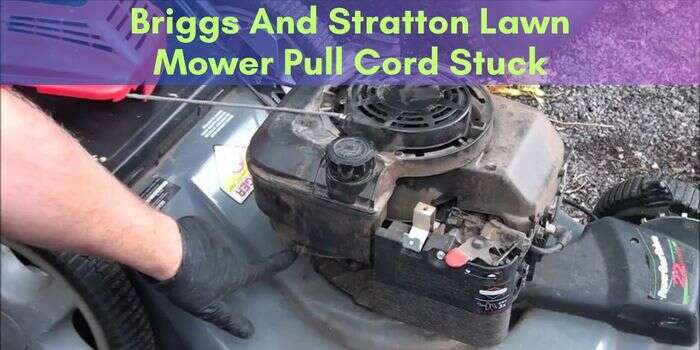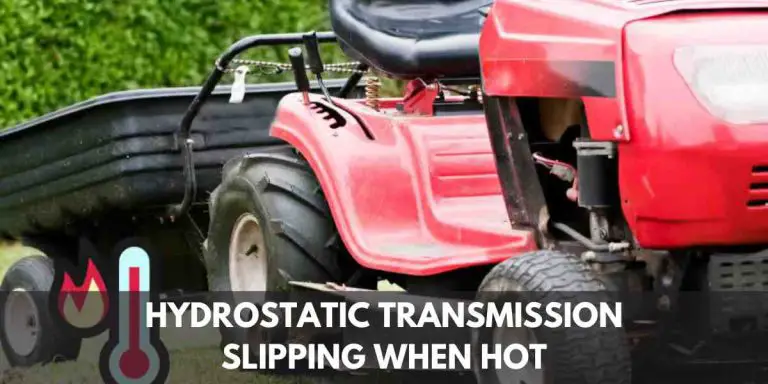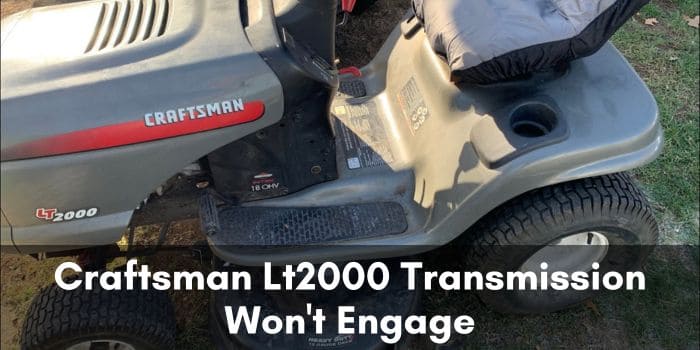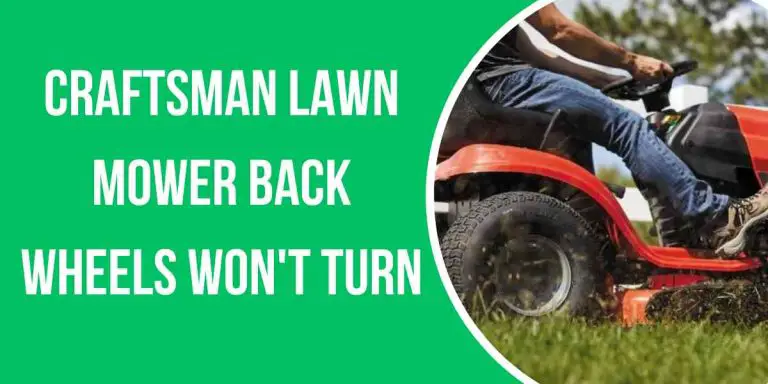Cub Cadet Fuel Pump Problems: Troubleshooting and Solutions
Cub Cadet fuel pump problems can cause poor performance and difficulty starting the engine. Here’s what you need to know about troubleshooting and addressing these issues.
If you notice your Cub Cadet experiencing problems with its fuel pump, such as sluggish performance or trouble starting, it’s essential to address the issue promptly. A faulty fuel pump can significantly affect your equipment’s performance and potentially lead to further damage if left unresolved.
We will explore common signs of a failing fuel pump, possible causes, and how to troubleshoot and fix the problem. By understanding the symptoms and taking appropriate steps, you can ensure smooth operation and extend the lifespan of your Cub Cadet equipment. So, let’s dive in and explore how to address fuel pump problems in your Cub Cadet.
Signs Of Fuel Pump Issues
A properly functioning fuel pump is essential for the optimal performance of your Cub Cadet lawn equipment. However, like any mechanical component, fuel pumps can experience issues over time. It’s important to be aware of the signs that indicate a fuel pump problem, as addressing these issues promptly can prevent further damage and help you avoid unexpected breakdowns. In this section, we will discuss the most common signs of fuel pump problems in your Cub Cadet equipment.
Engine sputters or stalls during operation
One of the most noticeable signs of a fuel pump problem is when your engine sputters or stalls during operation. This can occur when the fuel pump is not providing enough fuel to the engine. If your Cub Cadet equipment is experiencing frequent sputtering or stalling, it’s important to inspect the fuel pump for any potential issues.
Difficulty starting the engine or it takes longer than usual
Another common sign of fuel pump problems is difficulty starting the engine or an extended cranking time. When the fuel pump is not functioning properly, it may not be able to deliver the required fuel pressure to the engine for a smooth start. If you find yourself struggling to start your Cub Cadet equipment or notice that it takes longer than usual to start, it’s worth investigating the fuel pump as a potential culprit.
Inconsistent or weak fuel flow to the engine
A fuel pump problem can manifest in inconsistent or weak fuel flow to the engine. This can result in poor performance, reduced power, and even engine misfires. If you notice that your Cub Cadet equipment is exhibiting these symptoms, it is possible that the fuel pump is not delivering fuel at the optimal rate. Checking the fuel flow and inspecting the fuel pump for any blockages or malfunctions can help identify and resolve the issue.
Fuel pump makes unusual noises
Unusual noises coming from the fuel pump can indicate potential problems. A healthy fuel pump should operate quietly and without any unusual sounds. If you hear grinding, whining, or other abnormal noises coming from the fuel pump, it could be a sign of mechanical wear or a failing component. In such cases, it is recommended to have the fuel pump inspected or replaced to ensure the proper functioning of your Cub Cadet equipment.
Common Causes Of Fuel Pump Problems
Fuel pump problems can be a major headache for Cub Cadet owners, leading to engine performance issues and even breakdowns. Understanding the common causes of fuel pump problems can help you diagnose and prevent these issues in your Cub Cadet. Here, we will explore the most prevalent causes of fuel pump problems and what you can do to address them.
Clogged fuel filters restricting flow
One of the main culprits behind fuel pump problems is a clogged fuel filter. Over time, dirt, debris, and sediment can accumulate in the fuel filter, causing it to become blocked. This restricts the flow of fuel to the pump, leading to poor engine performance and potentially stalling. Regularly inspecting and replacing the fuel filter is crucial to prevent this issue.
Faulty pressure regulator leading to incorrect fuel pressure
A faulty or malfunctioning pressure regulator can also cause fuel pump problems. The pressure regulator is responsible for maintaining the correct fuel pressure in the system. If it fails to regulate the pressure properly, the fuel pump may receive inadequate fuel flow or excessive pressure, both of which can lead to pump failures. Inspect the pressure regulator regularly to ensure it is functioning correctly.
Electrical issues such as a faulty pump relay or wiring problems
Electrical problems can wreak havoc on the fuel pump’s performance. A faulty pump relay or wiring issues can prevent the pump from receiving the necessary power to operate effectively. In some cases, the pump may not receive any power at all. Regularly check the electrical connections and wiring for any signs of damage or corrosion. Replacing faulty relays or repairing wiring problems can help prevent fuel pump issues related to electrical malfunctions.
Contaminated fuel damaging the fuel pump
Using contaminated fuel can cause severe damage to the fuel pump. Water, dirt, or other contaminants can enter the fuel system and directly impact the pump’s operation. These contaminants can cause the pump to clog, corrode, or seize up, resulting in fuel delivery problems and engine performance issues. Ensuring you use clean, high-quality fuel and regularly inspecting the fuel system for any signs of contamination is essential to prevent fuel pump problems caused by fuel contamination.
In summary, clogged fuel filters, faulty pressure regulators, electrical issues, and contaminated fuel are some of the common causes of fuel pump problems in Cub Cadet machines. Regular maintenance, including inspecting and replacing fuel filters, checking pressure regulators and electrical connections, and using clean fuel, can help prevent these issues and keep your Cub Cadet running smoothly.
Troubleshooting And Solutions
When it comes to maintaining your Cub Cadet fuel pump, troubleshooting and finding solutions to common problems can help keep your lawn equipment running smoothly. By following these steps, you can effectively diagnose and address fuel pump issues, ensuring that your Cub Cadet functions optimally.
Check and clean the fuel filters regularly to maintain proper fuel flow
If you notice a decrease in power or performance in your Cub Cadet equipment, it could be due to a clogged fuel filter. Regularly checking and cleaning the fuel filters can prevent debris from hindering the flow of fuel. To clean the fuel filters, follow the steps below:
- Locate the fuel filter(s) in your Cub Cadet equipment.
- Remove the fuel filter(s) from the fuel line.
- Inspect the fuel filter(s) for any signs of blockage or damage.
- If the fuel filter(s) is dirty or clogged, clean it using compressed air or a fuel system cleaner.
- Reinstall the fuel filter(s) back into the fuel line.
Test the pressure regulator and replace if necessary to ensure correct fuel pressure
Proper fuel pressure is essential for the efficient operation of your Cub Cadet equipment. If you suspect that your fuel pump is not providing the correct fuel pressure, follow these steps to test the pressure regulator:
- Locate the pressure regulator in your Cub Cadet equipment.
- Using a fuel pressure gauge, connect it to the fuel system to measure the fuel pressure.
- Compare the measured fuel pressure to the recommended specifications for your Cub Cadet equipment.
- If the fuel pressure is outside the recommended range, the pressure regulator may need to be replaced.
- Replace the pressure regulator with a new one that is compatible with your Cub Cadet model.
Inspect the electrical connections and wiring for any damage or loose connections
Faulty electrical connections and damaged wiring can cause fuel pump problems in your Cub Cadet equipment. Check the electrical connections and wiring regularly to ensure they are in good condition and properly connected. Follow these steps to inspect the electrical connections:
- Locate the electrical connections and wiring related to the fuel pump in your Cub Cadet equipment.
- Visually inspect the connections and wiring for any signs of damage, corrosion, or loose connections.
- If you notice any issues, repair or replace the damaged connections or wiring.
- Ensure all connections are tight and secure.
Drain and replace fuel if it appears contaminated with debris or water
If your Cub Cadet fuel pump is experiencing issues, it could be due to contaminated fuel. If the fuel appears to be contaminated with debris or water, it is important to drain and replace the fuel. Follow these steps to safely drain and replace the fuel:
- Turn off the engine and allow it to cool.
- Locate the fuel tank and remove the fuel cap.
- Using a fuel siphon or drain plug, drain the fuel from the tank into a suitable container.
- Inspect the drained fuel for any signs of debris or water contamination.
- If the fuel is contaminated, dispose of it properly and replace it with fresh, clean fuel.
- Securely tighten the fuel cap and start the engine to ensure proper fuel flow.
Replace the fuel pump if it is making unusual noises or fails the tests
If your Cub Cadet fuel pump is making unusual noises or has failed the tests mentioned above, it may be necessary to replace the fuel pump. Follow these steps to replace the fuel pump:
- Locate the fuel pump in your Cub Cadet equipment.
- Disconnect any electrical connections or fuel lines connected to the fuel pump.
- Remove the fuel pump from its mounting bracket or housing.
- Install the new fuel pump, ensuring it is compatible with your Cub Cadet model.
- Reconnect the electrical connections and fuel lines to the new fuel pump.
- Start the engine and check for proper fuel flow and operation of the fuel pump.
By properly troubleshooting and addressing any fuel pump problems in your Cub Cadet equipment, you can ensure reliable performance and extend the lifespan of your lawn equipment.
How To Replace A Cub Cadet Fuel Pump
If you have been experiencing fuel pump problems with your Cub Cadet lawn mower, replacing the fuel pump may be necessary. The fuel pump is responsible for delivering fuel to the engine, ensuring it runs smoothly. In this guide, we will walk you through the process of replacing a Cub Cadet fuel pump, step by step.
Gather the necessary tools and safety equipment
To begin the process of replacing the fuel pump on your Cub Cadet lawn mower, it’s important to gather all the necessary tools and safety equipment. Here’s what you’ll need:
- Socket set
- Wrench
- Flathead screwdriver
- Shop towel or rag
- Safety goggles
- Gloves
Having these tools and safety equipment ready will make the process smoother and safer.
Disconnect the battery and drain the fuel tank
Before working on any fuel-related components, it’s crucial to disconnect the battery to avoid any potential electrical hazards. Use a wrench to disconnect the negative terminal of the battery.
Next, you’ll need to drain the fuel tank to prevent any fuel leaks or spills during the fuel pump replacement. To do this, place a suitable container beneath the fuel tank and remove the drain plug or valve.
Locate and remove the old fuel pump
With the battery disconnected and the fuel tank safely drained, you can now locate and remove the old fuel pump. The fuel pump is typically located near the engine or underneath the fuel tank.
Use a socket set or wrench to remove any bolts or fasteners securing the fuel pump to the engine or fuel tank.
Install the new fuel pump and reconnect any necessary components
Once the old fuel pump has been removed, it’s time to install the new fuel pump. Carefully position the new fuel pump in place, ensuring it is securely attached to the engine or fuel tank.
Reconnect any necessary components, such as bolts or fasteners, to ensure the new fuel pump is properly secured.
Test the new fuel pump for proper operation
Before finishing up the fuel pump replacement, it’s crucial to test the new fuel pump for proper operation. Reconnect the battery and turn on the ignition, but do not start the engine.
Listen for any clicking or humming sounds coming from the fuel pump. This indicates that the new fuel pump is functioning correctly and delivering fuel to the engine.
If the new fuel pump is silent or not producing the expected sound, double-check the connections and consult the manufacturer’s instructions.
By following these steps, you should be able to replace the fuel pump on your Cub Cadet lawn mower with ease. Remember to always prioritize safety and consult the manufacturer’s instructions if you encounter any difficulties.
Preventive Maintenance For Cub Cadet Fuel Pumps
Regularly replace fuel filters to prevent clogs
Your Cub Cadet fuel pump relies on a clean fuel supply to function optimally, and regular replacement of the fuel filter is crucial to prevent clogs. Over time, dirt, debris, and contaminants can accumulate in the fuel system, blocking the flow and compromising the performance of the fuel pump. By replacing the fuel filter at recommended intervals, you ensure that only clean fuel is delivered to the pump, minimizing the risk of clogs and preserving the longevity of your equipment.
Use high-quality fuel to minimize contaminants
The quality of the fuel you use directly impacts the performance of your Cub Cadet fuel pump. Low-quality or contaminated fuel can introduce harmful contaminants into the fuel system, leading to clogged filters, damaged fuel pumps, and decreased efficiency. To minimize these risks, it is essential to use high-quality fuel that meets the manufacturer’s recommendations. Investing in premium-grade fuels with fewer impurities can significantly reduce the likelihood of fuel pump problems and improve the overall performance of your equipment.
Keep the fuel tank clean to avoid debris entering the pump
One of the simplest yet often overlooked preventive measures is to keep the fuel tank clean. A dirty or debris-filled fuel tank can introduce contaminants into the fuel system, potentially causing damage to the fuel pump. Regularly inspect the fuel tank for any signs of dirt, debris, or water accumulation and ensure it is cleaned thoroughly if necessary. By keeping the fuel tank clean, you minimize the risk of debris entering the pump, ensuring optimal fuel flow and preventing potential fuel pump problems.
Check and maintain proper fuel pressure regularly
To keep your Cub Cadet fuel pump in excellent working condition, it is crucial to check and maintain proper fuel pressure regularly. A drop in fuel pressure can indicate potential issues with the fuel pump or other components within the fuel system. Using a fuel pressure gauge, regularly test the fuel pressure to ensure it falls within the manufacturer’s recommended range. If the pressure is outside the desired range, it may be necessary to inspect and troubleshoot the fuel system to identify and rectify any issues promptly.
Store the equipment properly during the offseason to prevent fuel-related issues
Proper storage of your Cub Cadet equipment during the offseason is essential to prevent fuel-related issues that can affect the fuel pump. Before storing the equipment, drain the fuel tank completely to avoid fuel degradation and the buildup of varnish deposits. Additionally, consider using a fuel stabilizer to prevent the formation of harmful residues that could affect fuel system components, including the fuel pump. Store the equipment in a clean and dry location, away from direct sunlight and extreme temperatures, to ensure that the fuel remains stable and the fuel pump remains protected.
Frequently Asked Questions For Cub Cadet Fuel Pump Problems
Why Is My Cub Cadet Fuel Pump Not Working?
There are several reasons why a Cub Cadet fuel pump may not be working. It could be due to a clogged fuel filter, a faulty fuel pump relay, or a fuel pump that needs to be replaced. It is important to troubleshoot the issue to determine the exact cause and take appropriate action.
How Do I Know If My Cub Cadet Fuel Pump Is Bad?
If your Cub Cadet fuel pump is bad, you may notice symptoms such as difficulty starting the engine, stalling while driving, or a loss of power. You can also perform a fuel pressure test using a gauge to measure the pressure produced by the pump.
If the pressure is lower than the recommended level, it indicates a faulty fuel pump.
Can A Fuel Pump Cause A No Start Condition?
Yes, a faulty fuel pump can cause a no start condition. When the fuel pump fails, it doesn’t provide the necessary fuel pressure for the engine to start. This can result in the engine not starting at all or struggling to start.
It is recommended to inspect and replace the fuel pump if necessary to resolve the issue.
How Often Should I Replace The Fuel Pump In My Cub Cadet?
The frequency of fuel pump replacement in a Cub Cadet can vary depending on factors such as usage, maintenance, and the quality of fuel used. Generally, it is recommended to replace the fuel pump every 50,000 to 100,000 miles or if there are signs of a malfunction such as engine performance issues or fuel leaks.
Conclusion
To wrap it up, dealing with Cub Cadet fuel pump problems can be frustrating. However, understanding the common issues and their solutions can help alleviate the stress. By regularly maintaining and checking your fuel pump, you can ensure its proper functioning, avoiding costly repairs.
Keep an eye out for symptoms like fuel leaks or engine misfires, and address them promptly. Don’t forget to consult professional help or refer to user manuals for accurate troubleshooting. Remember, a well-maintained fuel pump means a more reliable and efficient Cub Cadet experience.






